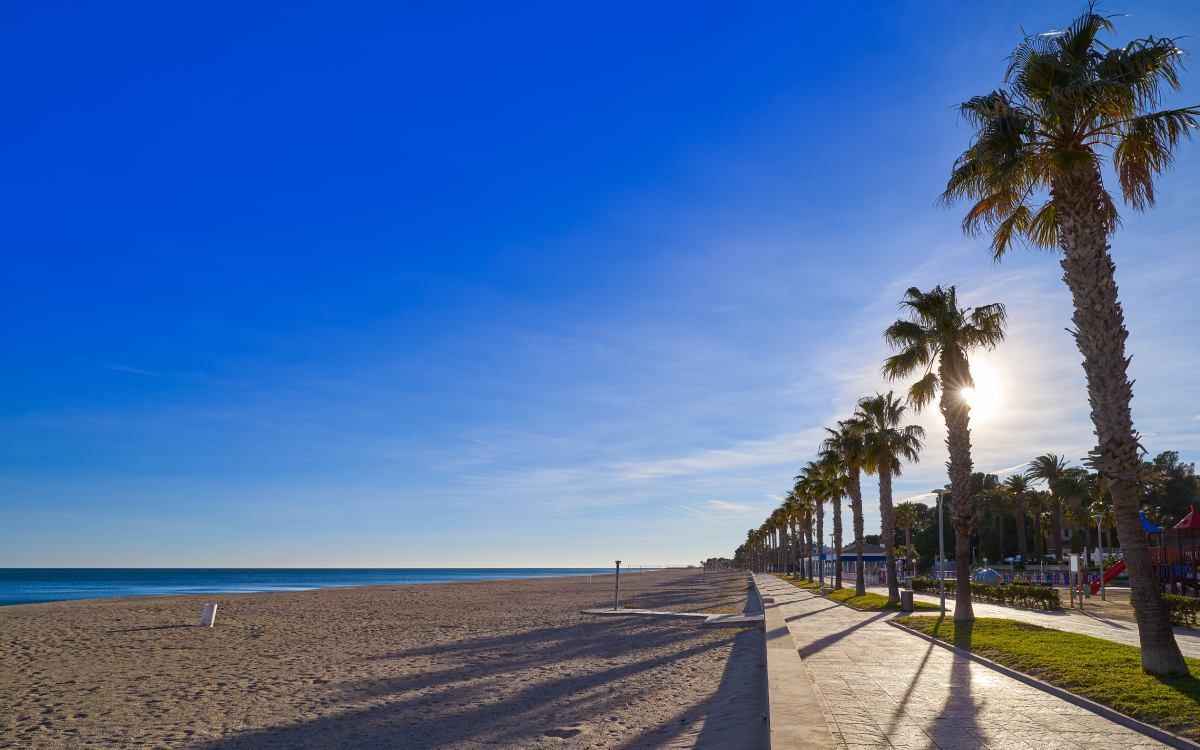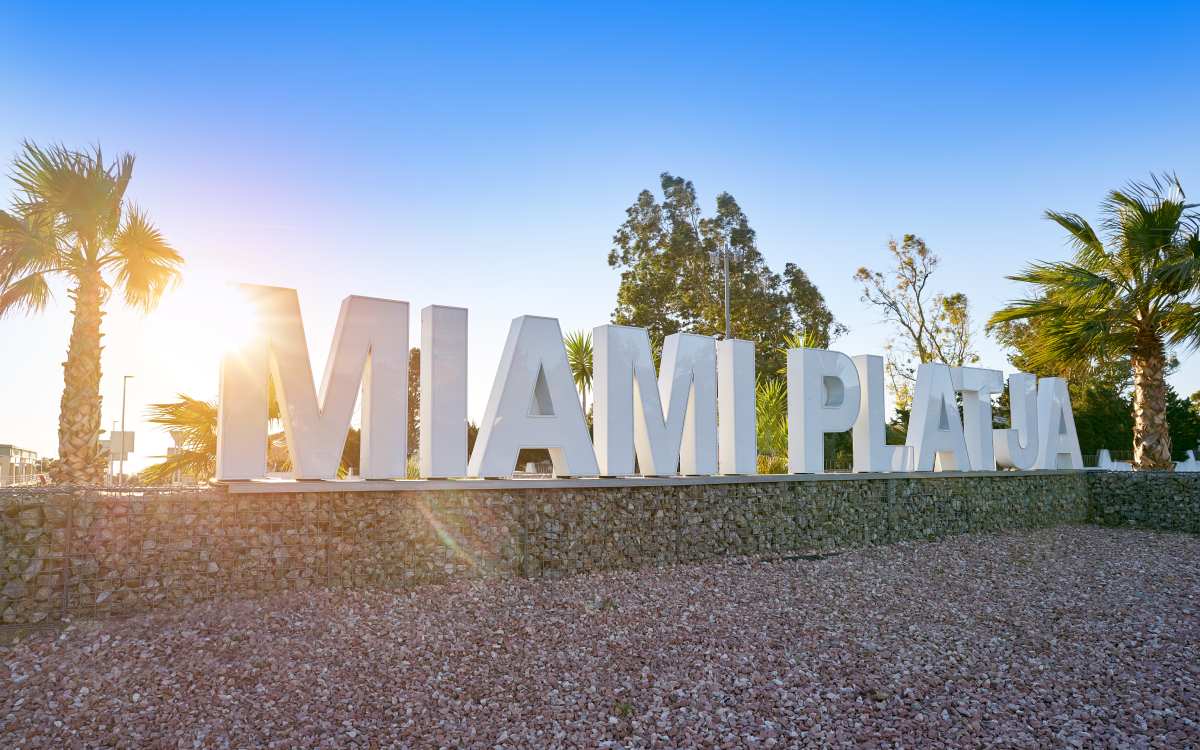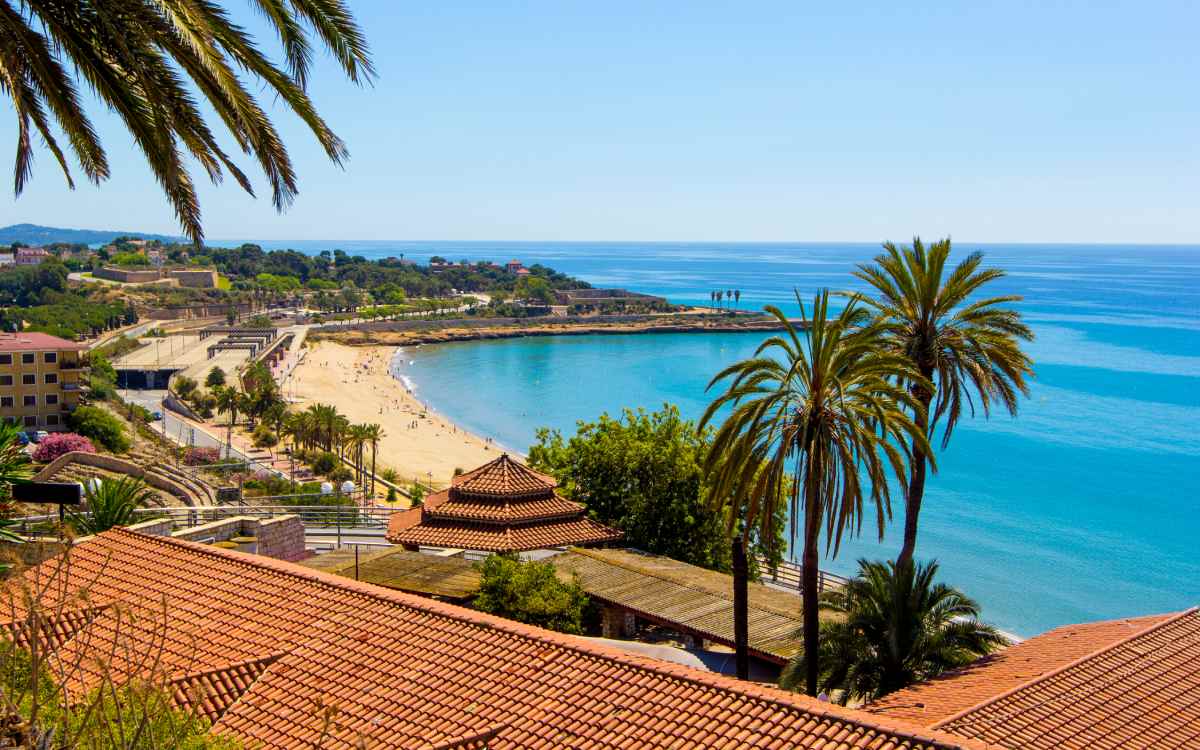
It might look like a mere imitation of the famous city in Florida where famous singers live, but the place known as the ‘Mediterranean Miami’ has enough qualities to beat any other tourist destination. This spot in the magical area of Costa Dorada, in the province of Tarragona, appeared in the decades of tourist development of the 20th century. Let’s take a look at all the ‘Spanish Miami’ has to offer.
Many people spend the summer in this Mediterranean spot because once you have discovered its charms, you won’t change them for anything else. If you haven’t been to this place yet, here are some reasons why you should do it as soon as possible.

The ‘Mediterranean Miami’. | Shutterstock
Miami Platja was an initiative by the Catalan businessman and property developer Marcel·lí Esquius, who began to urbanise the coastal area of the municipality of Mont-roig del Camp in the 1950s. The buildings appeared rapidly. Some of them were luxurious, actually. And the excellent communication of the recent urban area soon transformed Miami into a renowned summer destination, a village with a special atmosphere and thousands of vacationers who loved its beaches.
Regarding its name, the property developer’s son remembers how an article about a hurricane in Miami Beach inspired his father to name the area. The name was translated into Catalan (Miami Platja), so it would be easier for people to say.

Miami Platja. | Shutterstock
The coast of this area of Tarragona combines a wide beach, the Platja del Cristall, and gorgeous coves such as Cala Pescador. Every beach is different, but they all have something in common: their fine, golden sand, turquoise waters, and a blue flag.
Here you will even find a pet-friendly beach, Punta del Riu. Many beaches can be accessed from the local campings, a very popular choice among tourists. In many areas of the coast, it is possible to enjoy many activities other than swimming, such as kayaking or paddle surfing. The seaside is not only beautiful but particularly lively.

Miami Platja in the Costa Dorada. | Shutterstock
Just like many other coastal towns and areas, Mont-roig del Camp was raided by pirates and corsairs for centuries. People avoided settling near the coast, since it was an unsafe place, and no traces of their homes are left now. They belonged to a village called Miramar or Guardamar.
Mont-roig, the walled village of medieval origins, was always the centre of the municipality. However, it is still possible to discover traces of the past along the coast, such as the defensive tower that protected those houses. Two bunkers from the Civil War can be found as well, and they are perfectly integrated into the landscape. They were built by order of the Spanish Republic to avoid sea attacks and the landing of Franco’s troops.

Cova Foradada. | Shutterstock
The beach is the village’s greatest attraction, but its privileged location allows you to enjoy a thousand activities. The municipality of Mont-roig expands throughout the mountain, so it hides treasures such as the Cova Foradada, a wide cave of singular shapes where it is customary to celebrate Easter Monday.
A walk in the area will take you to many different wonders, from the diverse hermitages and the stone houses (or barracas) to the Escales del Diable, stairs carved in the beautiful reddish stone that is characteristic of other nearby landscapes, such as L’Areny.
Mont-roig del Camp’s cultural heritage is also characterised by Joan Miró’s legacy. The famous artist created some of his best works here. He was so deeply attached to this place, where he, in fact, purchased a second home, that he carried a single carob fruit from Mont-roig. This village was vital for his career, and its influence can be seen in all of his first works. A tribute to this deep bond can be visited now: Mas Miró. The route ‘Miró’s Emotional Landscape’ will teach you more about the artist’s feelings towards this area.
The small Llastres River separates Miami Platja from another urban area you should visit, L’Hospitalet de l’Infant. Paradisiacal beaches such as the Arenal and Les Rojales beaches await you in the south, near a natural territory full of lovely secrets like the nudist beach Platja del Torn or Cova del Llop Marí, a vibrant-turquoise beach inside a hidden cave.
You can also read this article in Spanish here.
Follow us on Facebook!